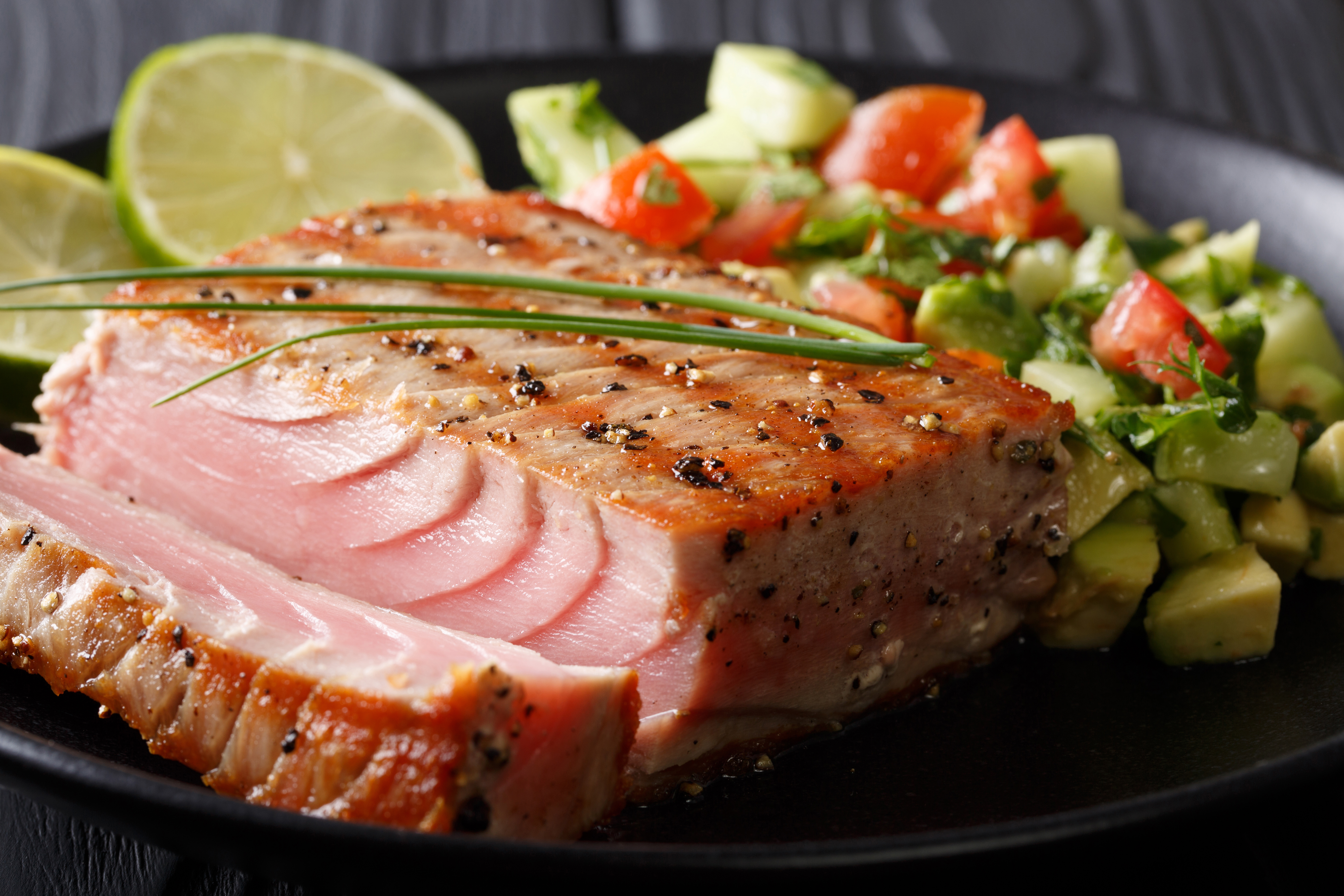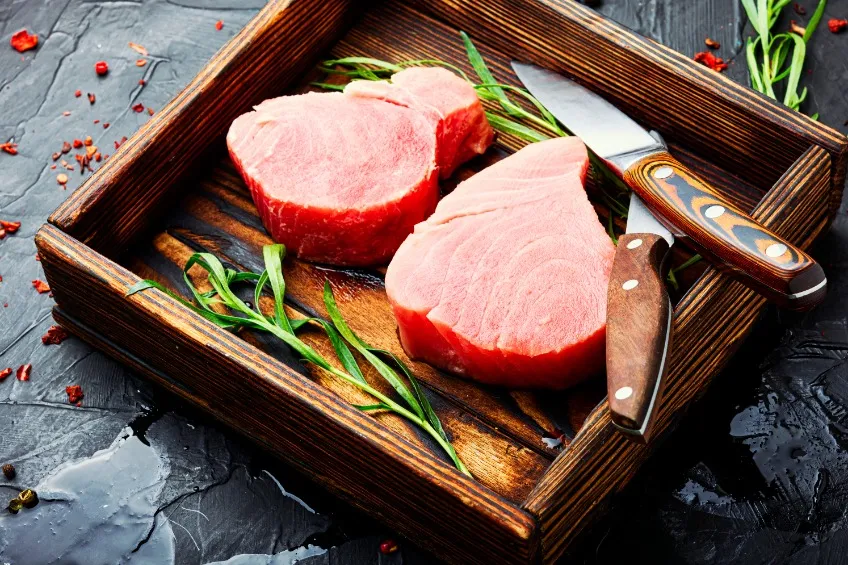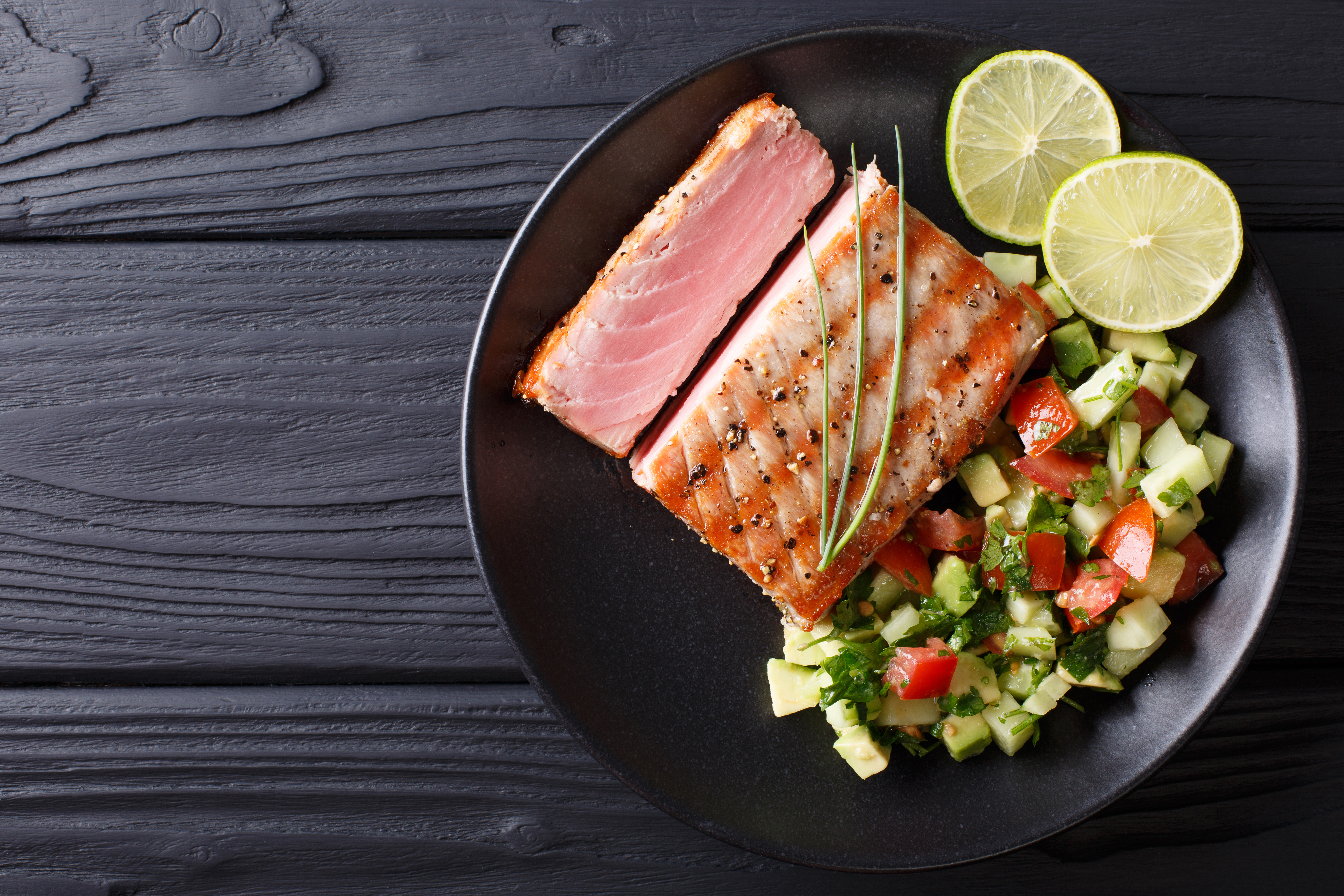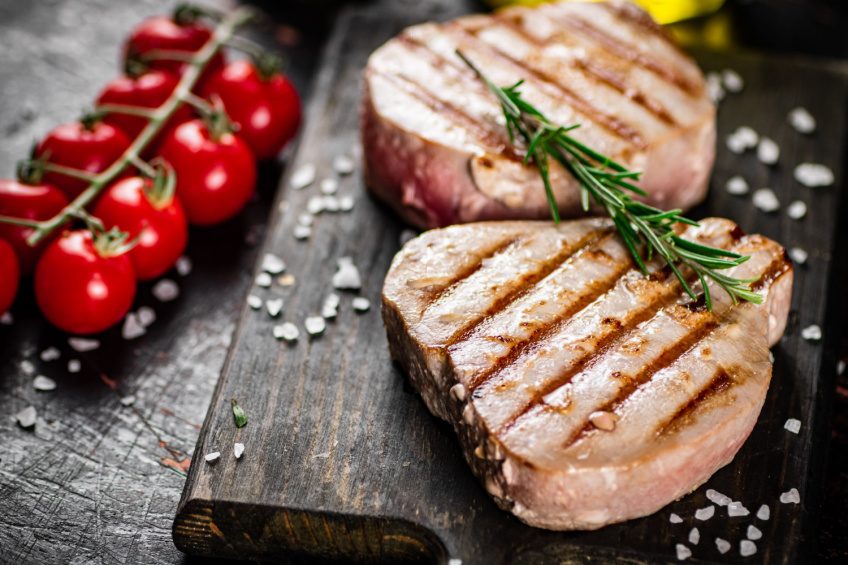This content has been archived. It may no longer be relevant
 Grilling tuna is a delicious and healthy way to enjoy this flavorful fish.
Grilling tuna is a delicious and healthy way to enjoy this flavorful fish.
Whether you’re a seafood aficionado or new to cooking fish on the grill, mastering the art of grilling tuna can be a game-changer for your culinary repertoire.
Tuna is known for its firm texture and rich taste, making it a popular choice for grilling.
However, it can be intimidating for some due to its delicate nature and specific cooking requirements.
In this article, we will explore the ins and outs of how to grill tuna, from selecting the right tuna steak to seasoning, cooking techniques, and serving suggestions.
Get ready to elevate your grilling skills and impress your family and friends with perfectly grilled tuna that is bursting with flavor!
Why Tuna is Beloved in the Kitchen
 Tuna is a favorite fish for many reasons.
Tuna is a favorite fish for many reasons.
Here are some factors that contribute to its popularity.
- Flavor. Tuna has a distinct and rich flavor that is often described as meaty, savory, and slightly sweet. It offers a unique taste that many people enjoy, making it a popular choice for seafood lovers.
- Texture. Tuna has a firm and meaty texture, which makes it ideal for grilling. It holds up well to high heat without falling apart, making it a great option for grilling and searing on a barbecue or stovetop grill.
- Versatility. Tuna can be prepared in various ways, such as grilling, searing, broiling, or even eaten raw as sushi or sashimi. Its versatility allows for a wide range of culinary creations, from simple grilled tuna steaks to more complex tuna dishes in a variety of cuisines.
- Nutritional Value. Tuna is packed with lean protein, omega-3 fatty acids, and essential vitamins and minerals, making it a nutritious choice for a balanced diet. It is also low in fat and calories, making it a healthier option compared to some other types of meat.
- Availability. Tuna is widely available in many parts of the world, making it easily accessible to consumers. It can be found in various forms, including fresh, frozen, canned, or smoked, making it a convenient choice for cooking at home or dining out.
- Culinary Tradition. Tuna has a long history of culinary tradition in many cultures, especially in coastal regions where fishing is prevalent. It has been a staple food in many cuisines, and its popularity has carried over to modern cuisine as well.
These are some of the reasons why tuna is a favorite fish among many people.
Its unique flavor, firm texture, versatility, nutritional value, availability, and culinary tradition all contribute to its popularity in the culinary world.
Cooking Through vs. Searing – What You Need To Know
 Tuna is a popular fish known for its rich flavor and meaty texture, making it a great option for grilling.
Tuna is a popular fish known for its rich flavor and meaty texture, making it a great option for grilling.
When it comes to grilling tuna, there are two main techniques to consider, cooking through and searing.
Each method has its advantages and considerations, and understanding the differences between the two can help you achieve perfectly grilled tuna every time.
Cooking Through
Cooking tuna through involves grilling the fish for a longer duration at a lower heat, allowing the heat to penetrate the entire thickness of the tuna steak.
This method results in a more evenly cooked piece of fish with a consistent texture throughout.
It’s a great option for thicker cuts of tuna or when you want to achieve a more well-done or fully cooked result.
Here are some tips for cooking tuna through.
- Use lower heat. Set your grill to a medium or medium-low heat to ensure that the tuna cooks through evenly without burning the exterior.
- Longer cooking time. Tuna steaks are usually about 1 inch thick, so they will require more time on the grill compared to searing. Aim for around 5-7 minutes per side, depending on your desired level of doneness.
- Baste with marinade or oil. Brushing the tuna with marinade or oil during grilling can help keep the fish moist and add flavor.
- Use a meat thermometer. To ensure that the tuna is cooked through to the desired internal temperature, use a meat thermometer to check the thickest part of the steak. The internal temperature should reach 145°F (63°C) for medium-rare, 160°F (71°C) for medium, and 165°F (74°C) for well-done.
Searing.
Searing tuna involves quickly searing the exterior of the fish over high heat, leaving the interior raw or rare.
This method results in a crispy and flavorful crust on the outside with a tender and juicy interior.
It’s a great option for thinner cuts of tuna or when you want to enjoy the natural flavor and texture of the fish without fully cooking it.
Here are some tips for searing tuna.
- Use high heat. Set your grill to high heat to quickly sear the tuna and create a crispy crust on the outside.
- Shorter cooking time. Since searing is a quick cooking method, tuna steaks only need about 1-2 minutes per side for a rare or medium-rare result, depending on the thickness of the steak.
- Let it rest. After searing, allow the tuna to rest for a few minutes before slicing to allow the juices to redistribute and the flavors to develop.
- Season after searing. Season the tuna with salt and pepper or any other desired seasonings after searing, as seasoning before searing can cause the spices to burn and result in a bitter taste.
Cooking through and searing are two different techniques for grilling tuna, each with its own advantages and considerations.
Cooking through results in a more evenly cooked piece of fish, while searing creates a crispy crust on the outside with a raw or rare interior.
Choose the method that best suits your preferences and desired outcome, and with these tips, you’ll be able to grill perfectly prepared tuna at home.
How To Grill Tuna

Grilling tuna at home is a delicious way to enjoy this flavorful and nutritious fish.
Tuna is known for its firm texture and rich flavor, which can be enhanced with the smoky charred notes from grilling.
Here’s a step-by-step guide on how to grill tuna at home.
- Choose Fresh Tuna
Select fresh, high-quality tuna steaks from a reputable source. Look for tuna steaks that are firm, with a vibrant color and no unpleasant odors. Ideally, choose sushi-grade tuna, which is meant to be consumed raw or lightly seared.
- Prepare the Tuna Steaks
Pat dry the tuna steaks with paper towels to remove excess moisture, which will help with searing. If desired, you can marinate the tuna steaks in your favorite marinade for 30 minutes to an hour before grilling to add extra flavor.
- Preheat the Grill
Preheat your grill to high heat, around 400°F to 450°F. Make sure the grates are clean and well-oiled to prevent sticking.
- Grill the Tuna Steaks
Place the tuna steaks directly on the hot grill grates. Grill for about 2-3 minutes per side for rare to medium-rare, or 4-5 minutes per side for medium, depending on the thickness of the tuna steaks. Avoid overcooking as tuna can quickly become dry and lose its flavor.
- Use the “Touch Test” or Meat Thermometer
To check the doneness of the tuna steaks, you can use the “touch test” or a meat thermometer. For the touch test, gently press the center of the tuna steak with your finger. If it feels soft and spongy, it’s likely rare. If it feels slightly firmer with some resistance, it’s medium-rare. If it feels very firm, it’s medium or well-done. Alternatively, you can use a meat thermometer inserted into the thickest part of the tuna steak. The internal temperature should be 120°F for rare, 130°F for medium-rare, and 140°F for medium.
- Rest the Tuna Steaks
Remove the tuna steaks from the grill and let them rest for a few minutes before serving. This allows the juices to redistribute and the tuna to continue cooking slightly.
- Serve and Enjoy!
Serve the grilled tuna steaks with your favorite side dishes, such as grilled vegetables, rice, or a fresh salad. You can also drizzle some lemon juice, olive oil, or a simple vinaigrette over the tuna steaks for added flavor. Enjoy the juicy and flavorful grilled tuna steaks as a main course or in sandwiches, salads, or bowls.
Grilling tuna at home is a simple and delicious way to enjoy this flavorful fish. With a few basic steps and some attention to doneness, you can create a restaurant-quality dish right in your own backyard.
Serving Grilled Tuna
 Serving grilled tuna can be a delightful experience, as the charred and flavorful fish pairs well with a variety of side dishes and condiments.
Serving grilled tuna can be a delightful experience, as the charred and flavorful fish pairs well with a variety of side dishes and condiments.
Here are some ideas for serving grilled tuna.
- Simple Lemon and Olive Oil Dressing, Drizzle freshly squeezed lemon juice and high-quality olive oil over the grilled tuna steaks to enhance their natural flavors. You can also add a pinch of salt, pepper, and minced garlic for extra seasoning.
- Fresh Herb Sauce. Create a vibrant herb sauce by blending together fresh herbs such as parsley, cilantro, basil, or dill with olive oil, garlic, lemon juice, and salt. Spoon the herb sauce over the grilled tuna steaks for a burst of flavor.
- Mango Salsa. Prepare a refreshing mango salsa by combining diced mango, red onion, jalapeno, cilantro, lime juice, and a pinch of salt. The sweet and tangy flavors of the salsa complement the grilled tuna beautifully.
- Mediterranean Salad. Serve the grilled tuna over a bed of mixed greens, tomatoes, cucumbers, red onions, olives, and feta cheese for a Mediterranean-inspired salad. Drizzle with a lemon vinaigrette for a tangy dressing.
- Grilled Vegetables. Grill some vegetables such as asparagus, bell peppers, zucchini, or eggplant alongside the tuna for a complete meal. Season the vegetables with olive oil, salt, and pepper, and serve them alongside the grilled tuna for a delicious and wholesome plate.
- Tuna Poke Bowl. Cut the grilled tuna into cubes and serve it as a topping for a colorful and flavorful poke bowl. Combine the tuna cubes with diced avocado, cucumber, seaweed salad, and a drizzle of soy sauce or spicy mayo for a tasty and satisfying meal.
- Tuna Sandwich. Place the grilled tuna between slices of crusty bread or a bun, and add some lettuce, tomato, and your favorite condiments for a delicious tuna sandwich. You can also melt some cheese on top of the tuna for added richness.
Remember to let the grilled tuna rest for a few minutes before serving to allow the flavors to meld and the juices to redistribute.
With these serving ideas, you can create a memorable and enjoyable meal featuring grilled tuna as the star ingredient. Bon appétit!
